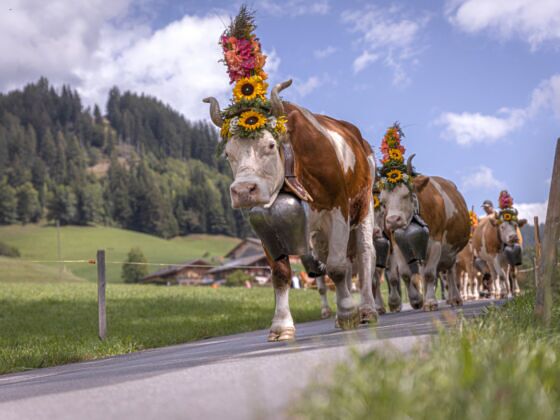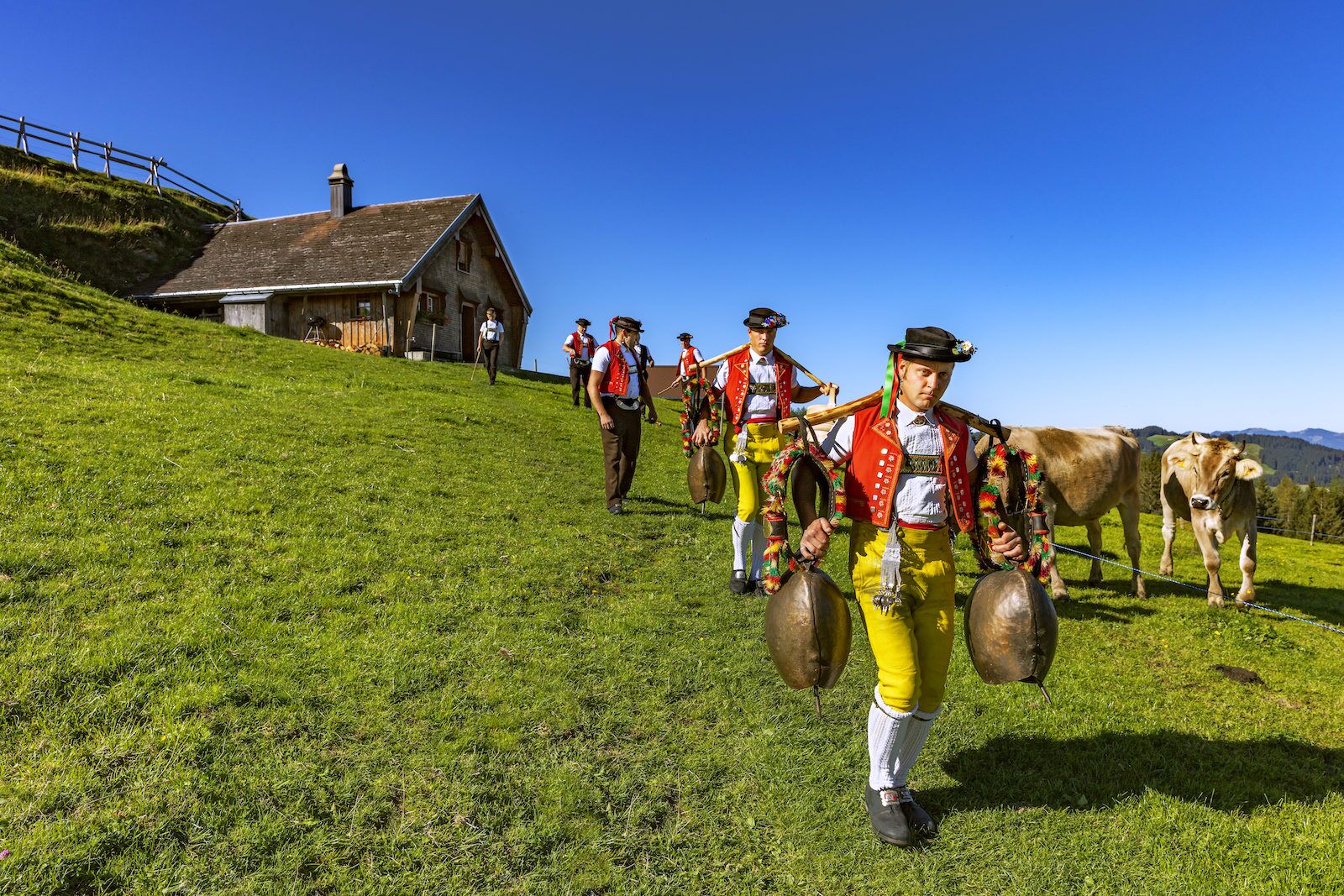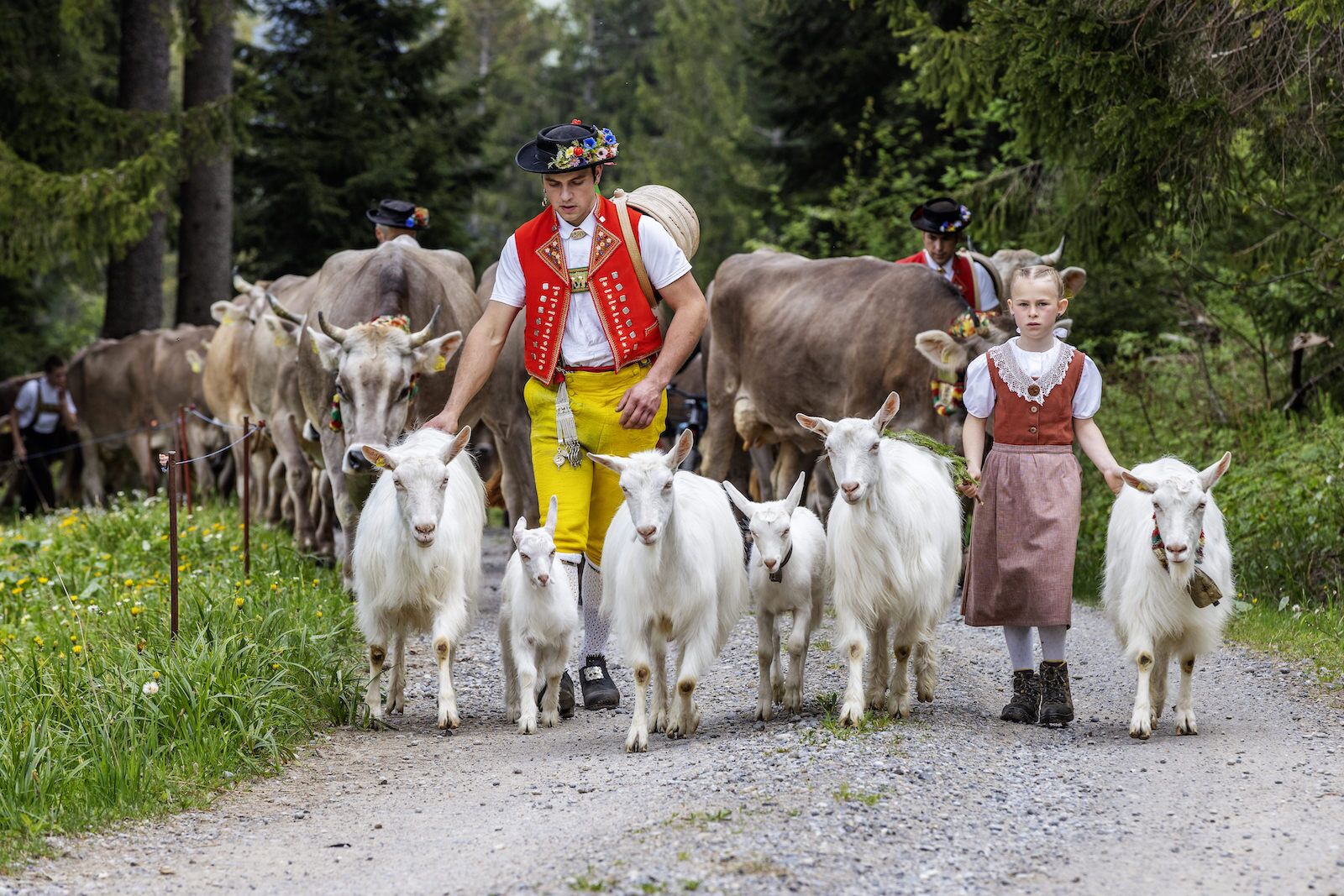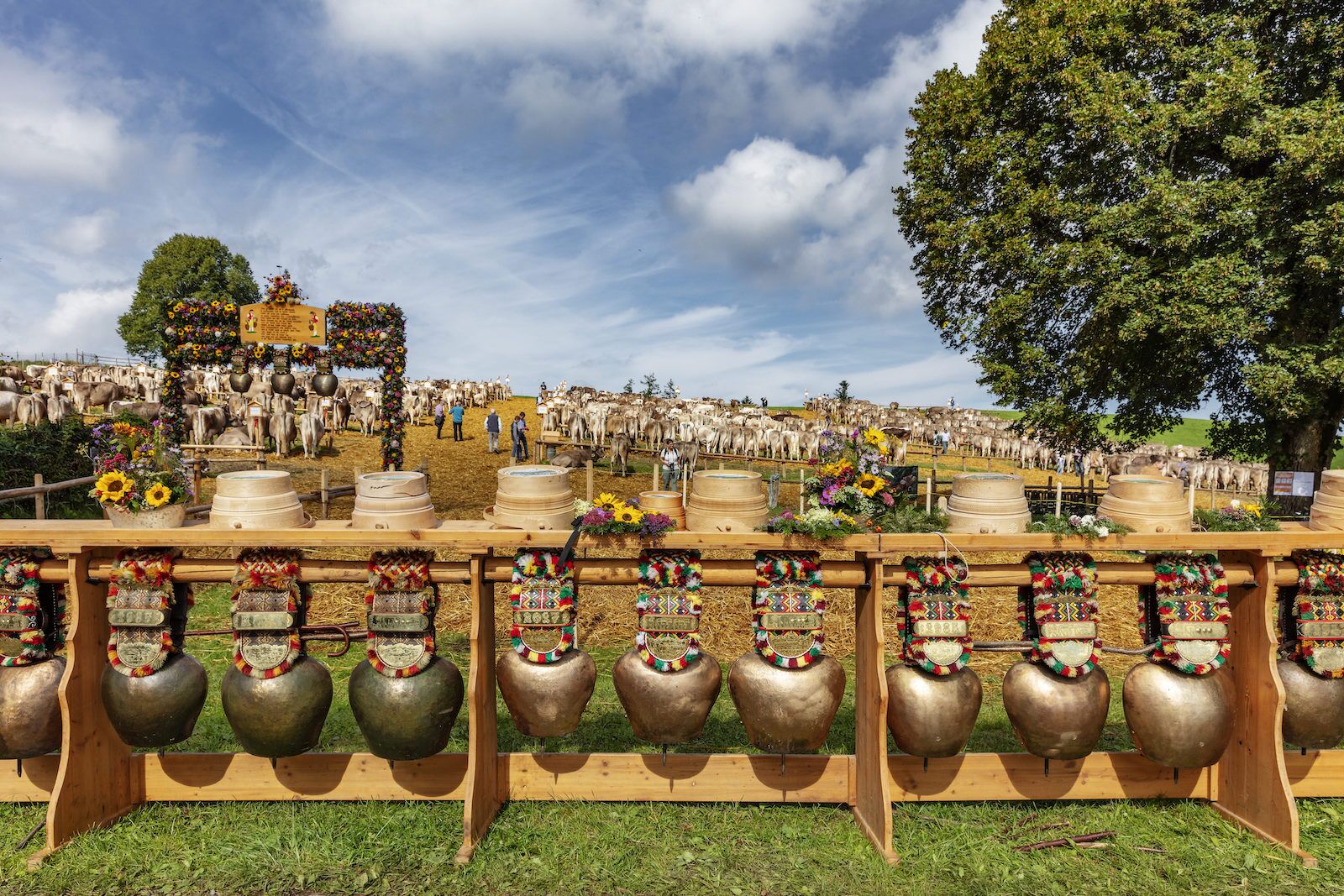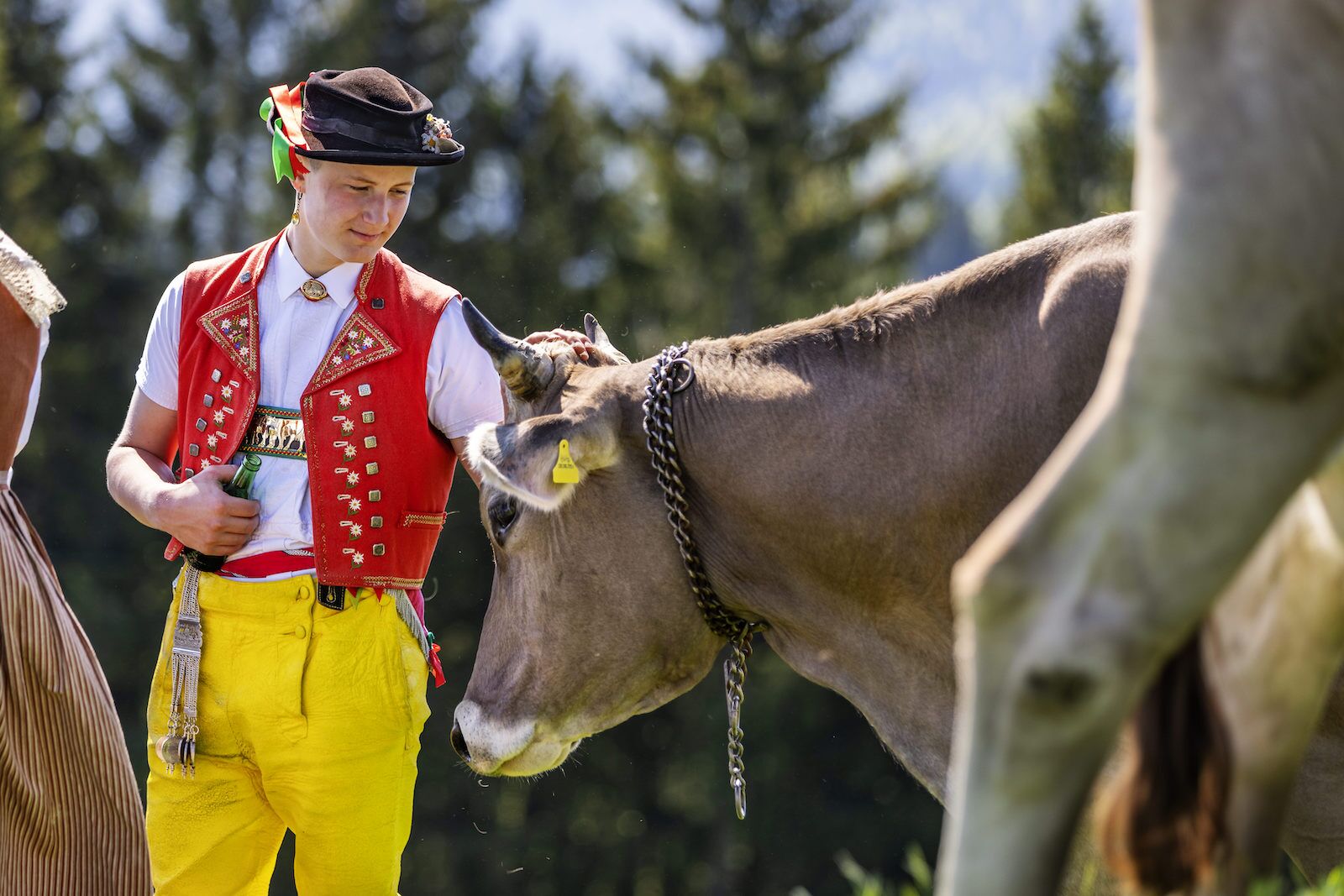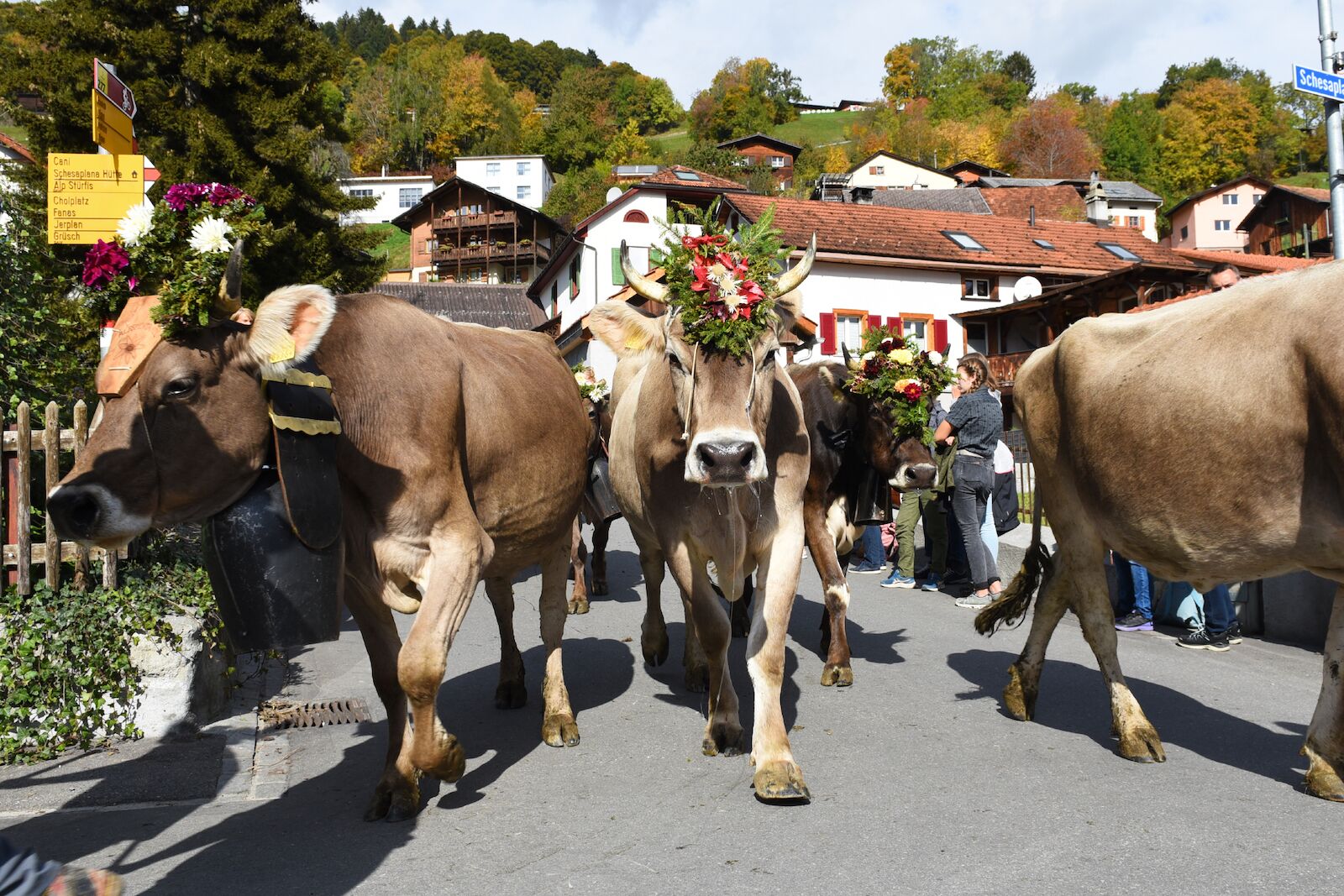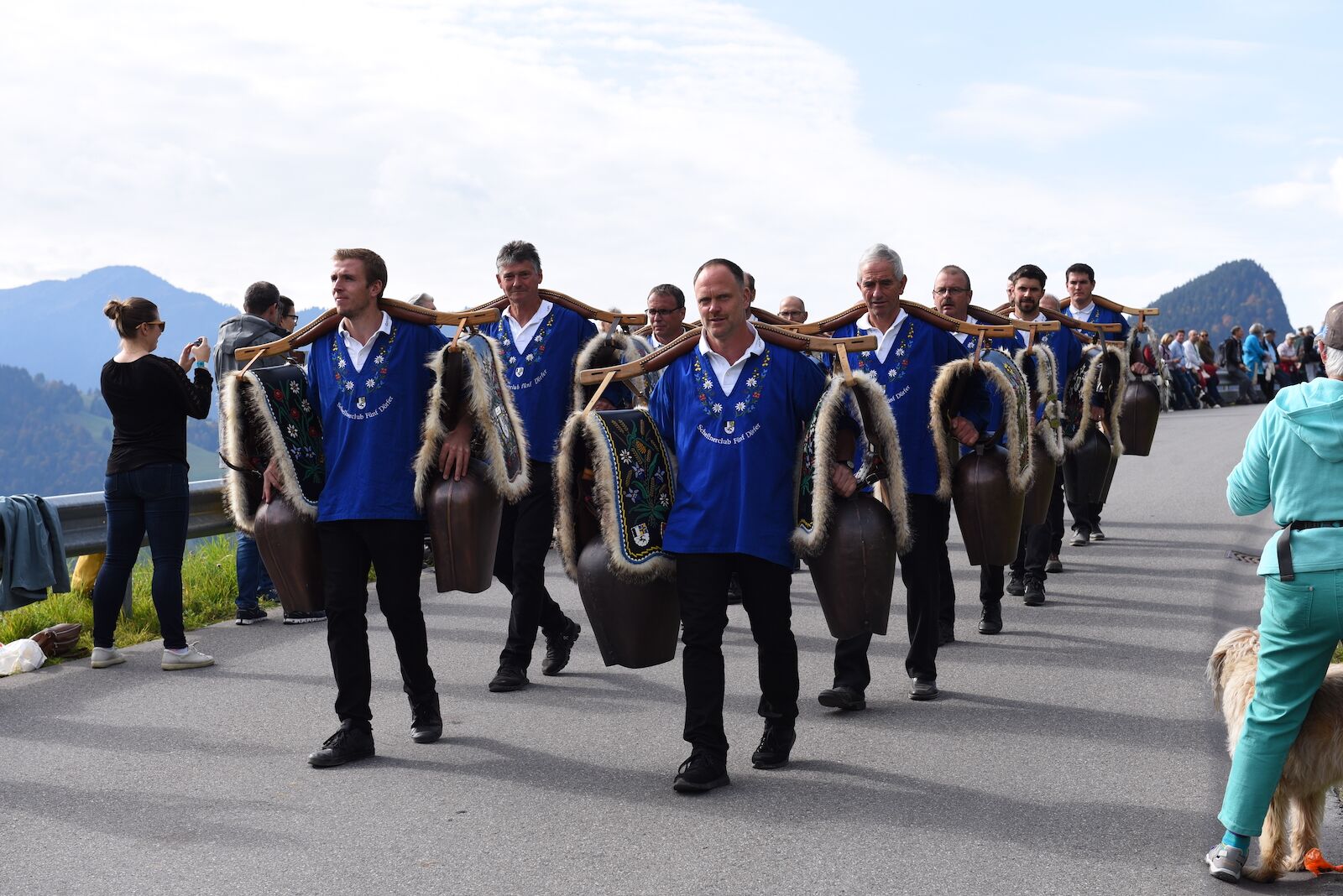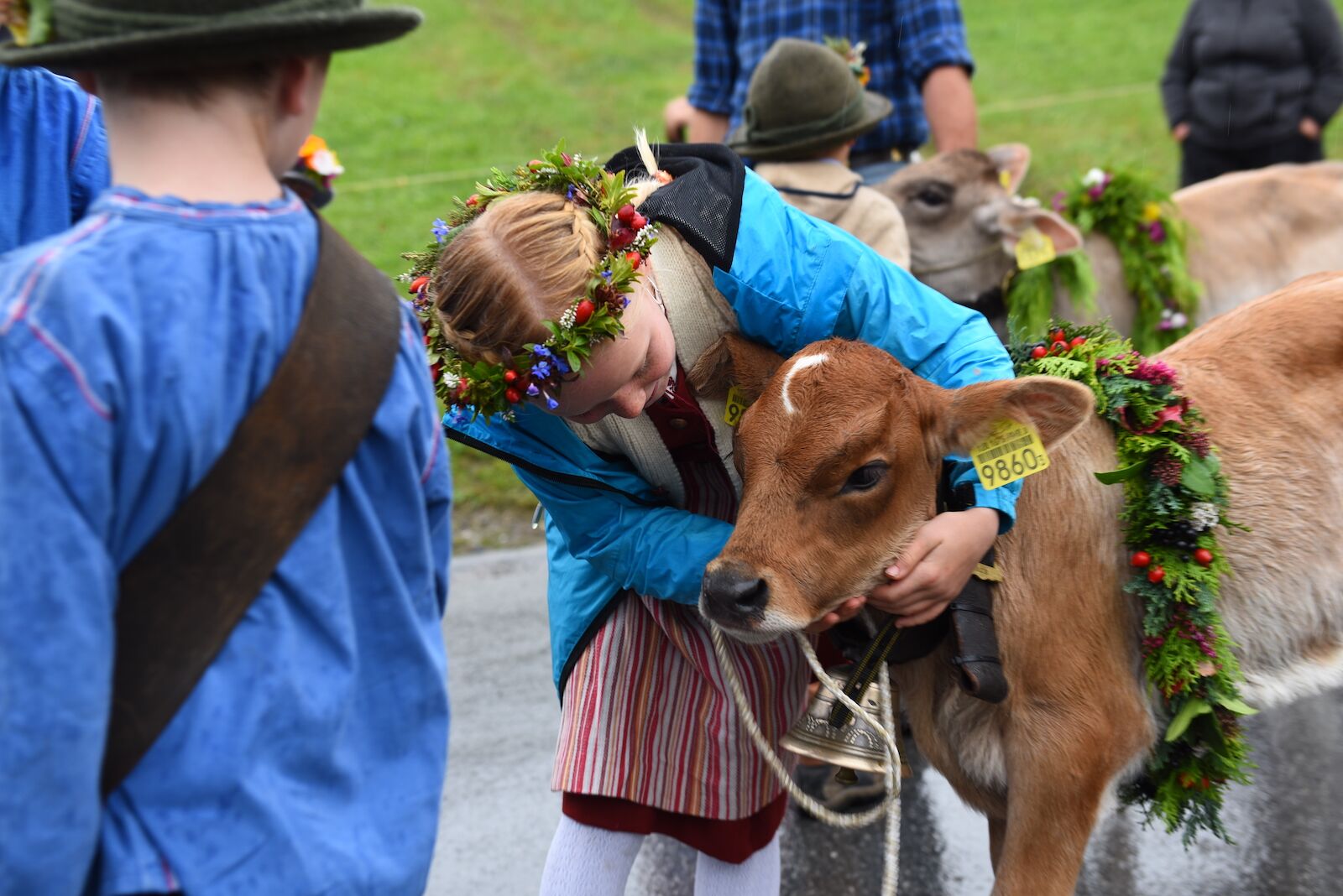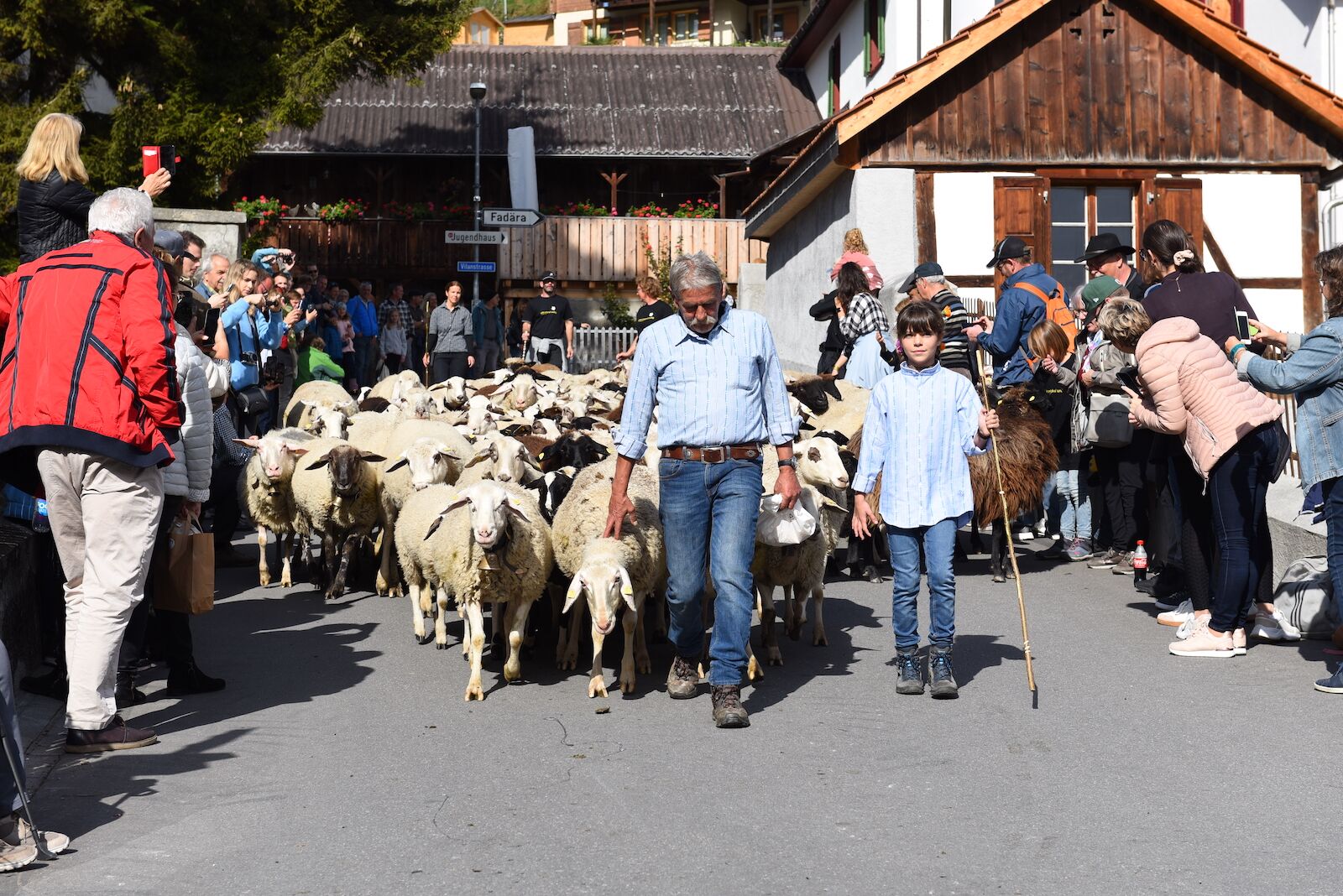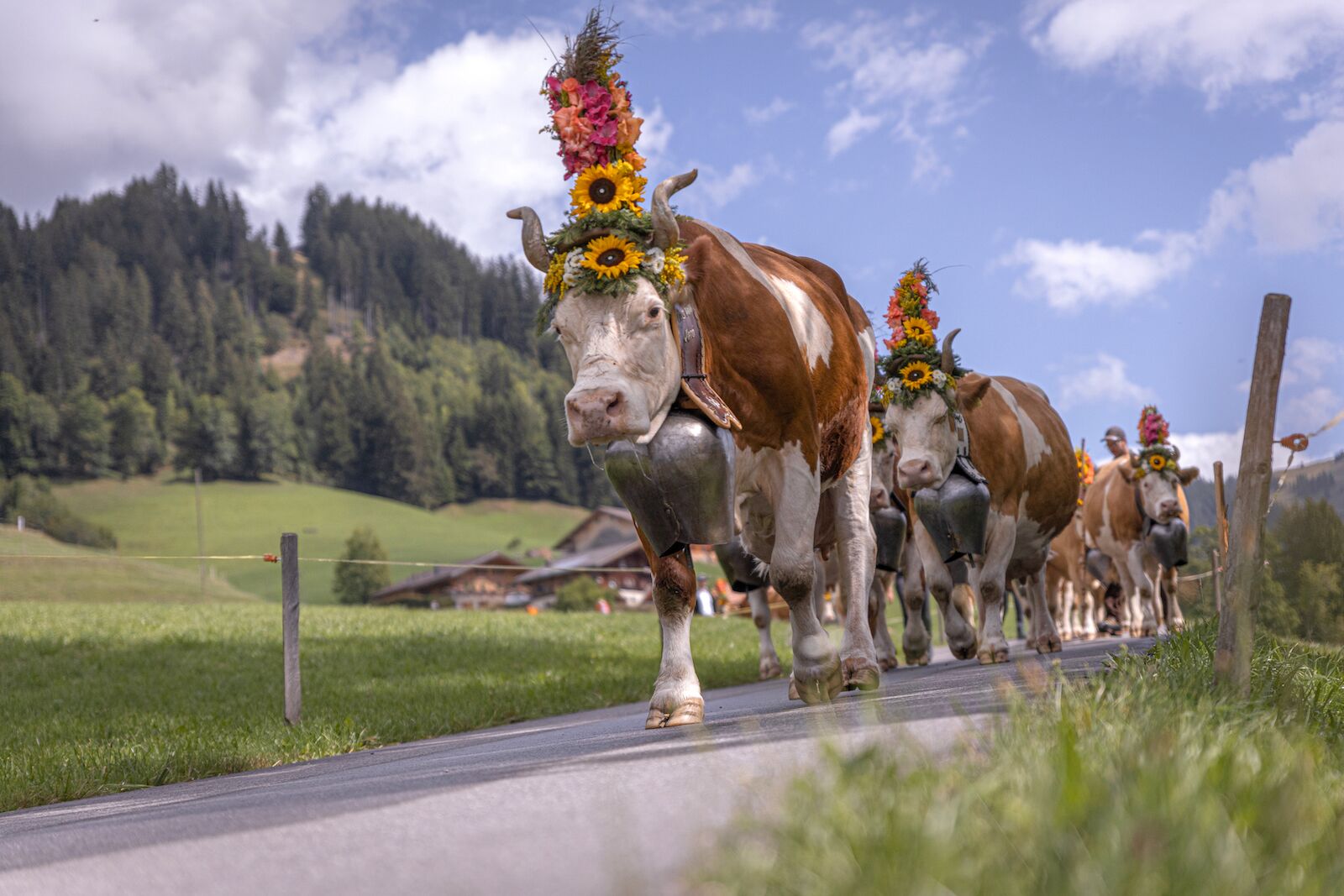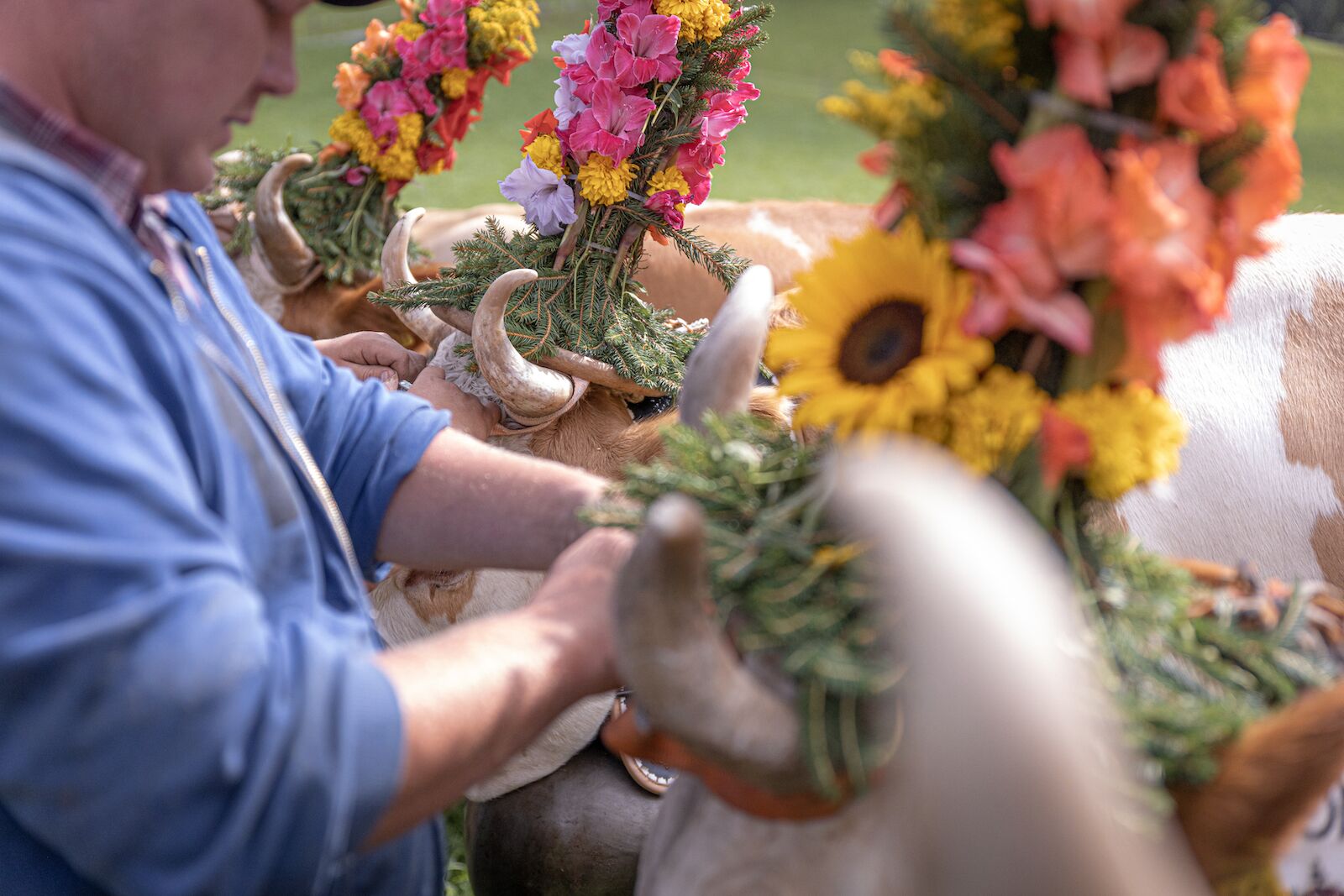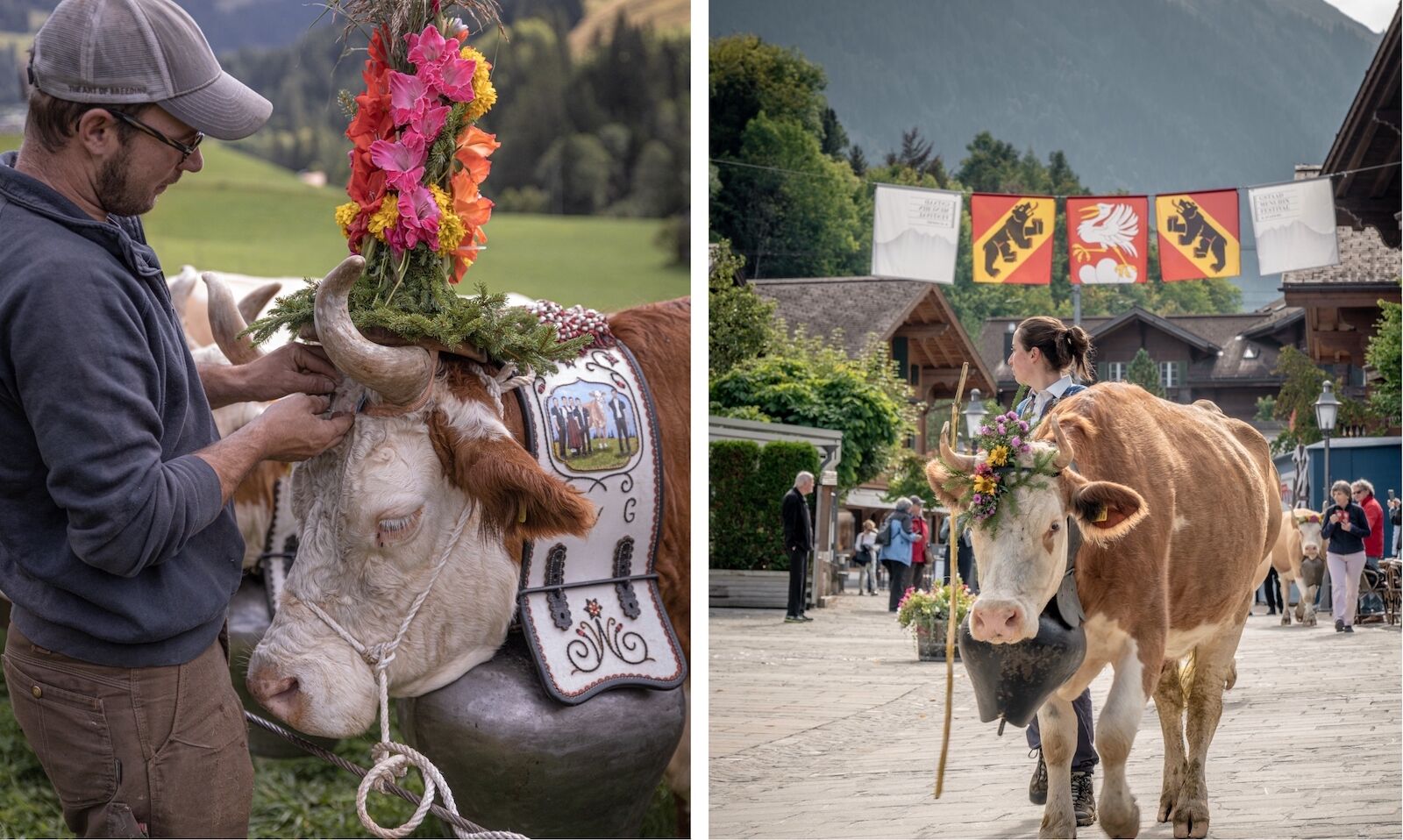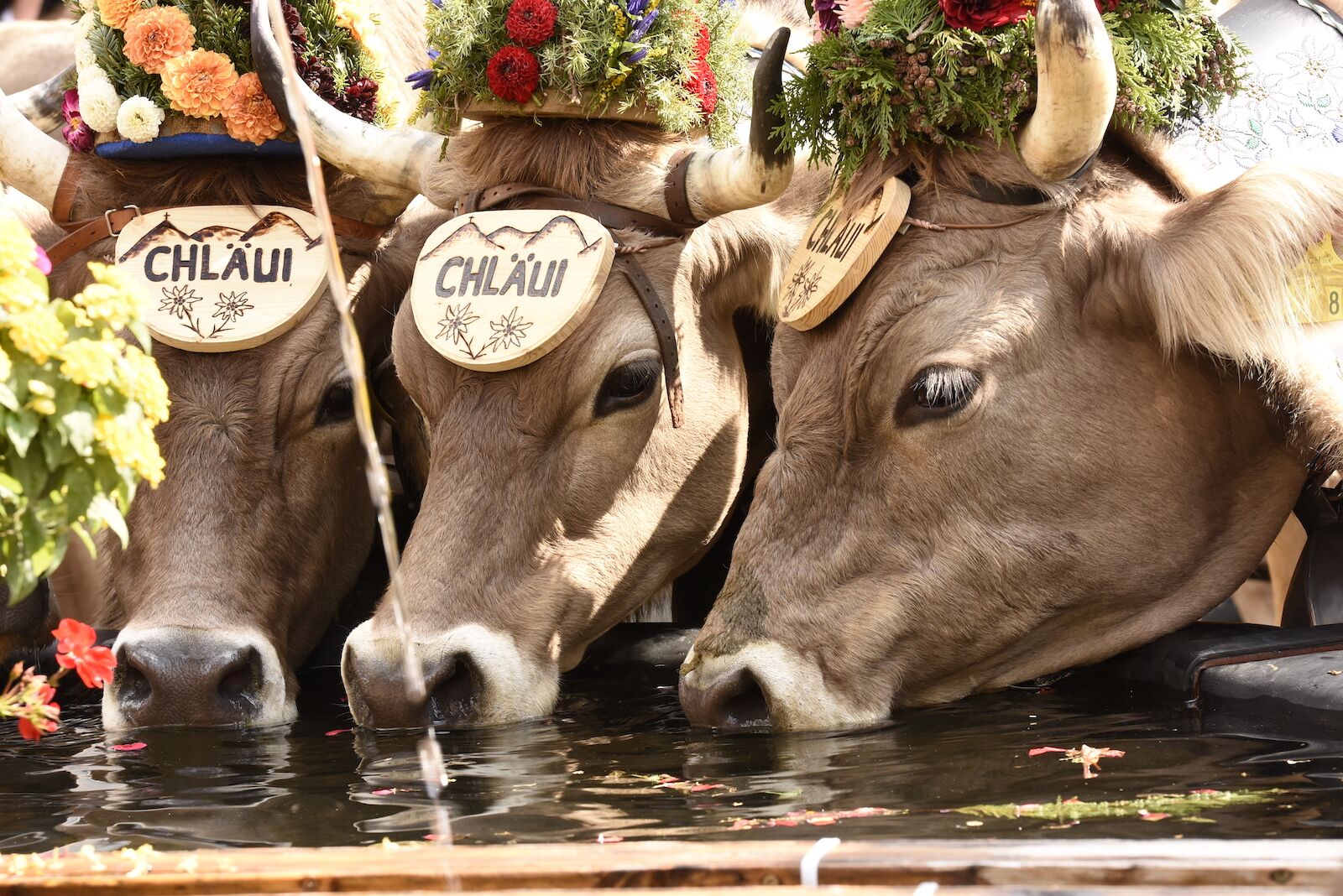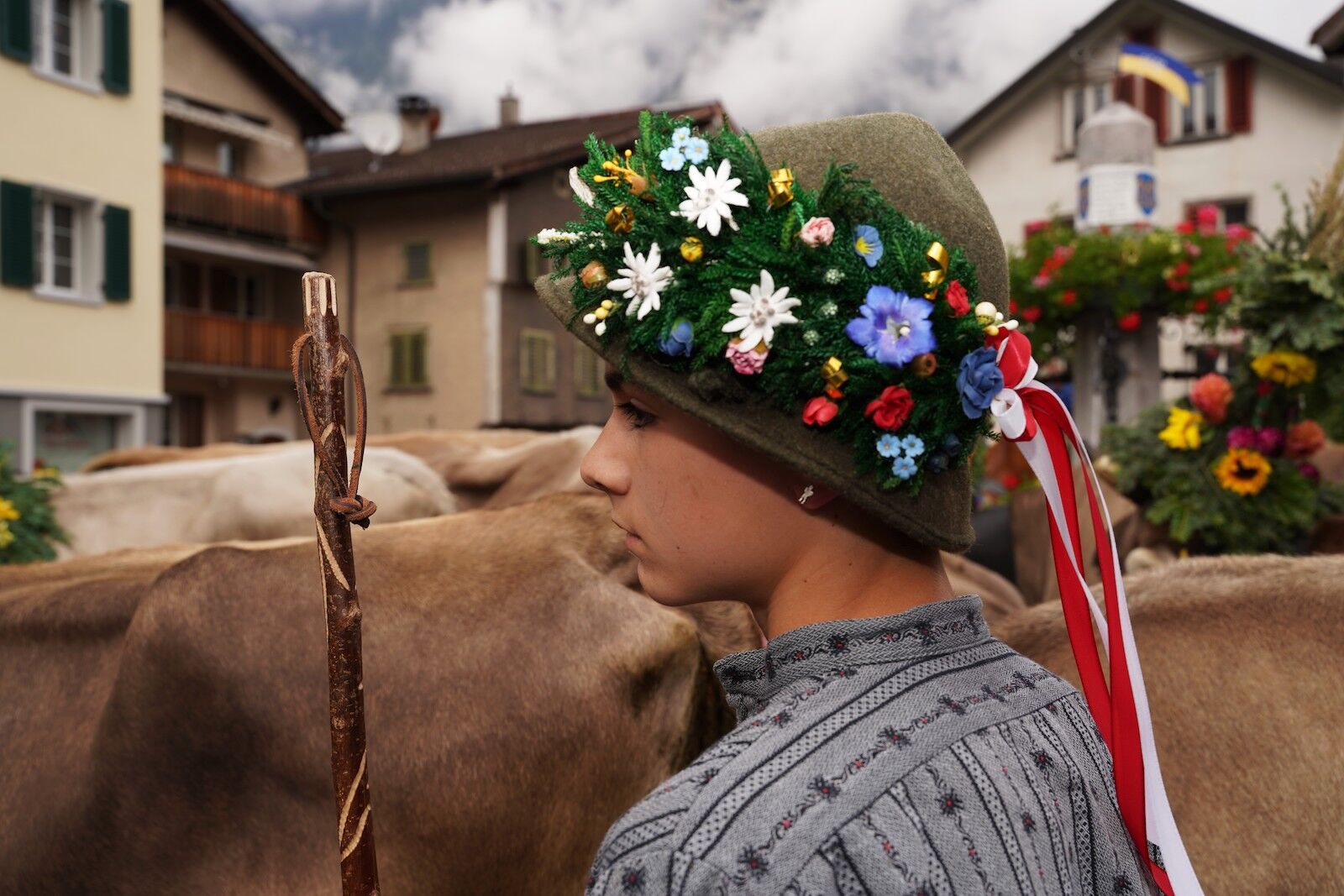Scenes of Switzerland invariably include Alpine slopes dotted with dairy cows happily munching on summer grasses. At other times of year, however, those slopes are covered in snow and filled with skiers. How do these cows get back down before the winter storms?
They do so in a parade, festooned with flowers, ambling downwards to the sounds of cowbells, Alpine yodeling, or horn-playing, all the while cheered by onlookers. Every autumn in Switzerland, the movement of these bovine beasts, more than a quarter million of them, from 7,000 different mountain pastures to the valley floor thousands of feet below, is a major event.
This seasonal celebration, featuring goats, prized cows wearing flower-crowns, and farmers and shepherds clad in traditional costumes, is repeated all over Switzerland throughout the fall. Here’s what you need to know to understand and see the best cow festivals in Switzerland.
